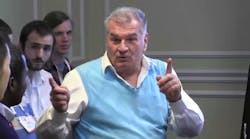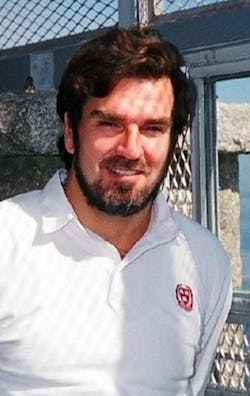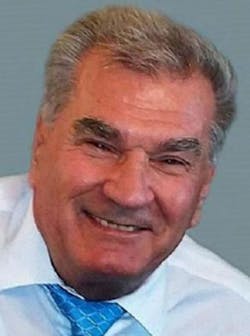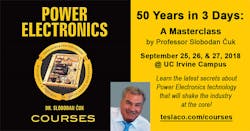I am a proud member of a golden generation of the electrical engineering class of 1966 at Belgrade University, former Yugoslavia. More than 1,000 candidates took two grueling entrance exams competing for 300 spots: one in physics and another one with two sittings in mathematics lasting six hours. Officially, only four people passed with 45 points of 100 maximum! I was one of the lucky four.
For my first two years, I was in the new Nuclear Sciences Department and then specialized in control systems the last two years. As fate would have it, I missed (by a hair) being accepted for a new assistant professor’s position in the Control System Department in 1971. My mentor, Professor Rakic, recommended that I go to the United States and get a master’s degree in control systems while waiting for another position to open up. So, on February 29, 1972, I took a charter flight to San Francisco paid for by my new sponsor, the United States space agency, NASA.
Also as fate would have it, I applied in January 1974 to Caltech. My future mentor, David Middlebrook, sent me his paper on the boost converter, a simple circuit with one transistor, one diode, and one inductor. This circuit miraculously stepped up a dc input voltage that linear power supplies could not. I decided on the spot that this was going to be my chosen field, as I had no idea how this thing worked.
In my two years of PhD studies at Caltech, I created the General State-Space Averaging Method, and on April 1, 1975, invented what is now known as the Ćuk converter. Then (and now) it was recognized as the fourth member of what had been the trio of basic converters—the buck, the boost, and the buck-boost. By the way, when I invented my new topology, no inventors came forward to claim the older ones.
The author from 1988 when he was teaching a course on power electronics with David Middlebrook.
I am now happy to report that after 50 years in power electronics, I have succeeded in surpassing all of these topologies. What I mean by that is simply that I have developed new switching methods and new topologies capable of much higher performance than the existing ones. In my upcoming Masterclass,1 I will be explaining how I have replaced all of these topologies with a power-converter-on-a-chip (PwrC) switching not at 50 MHz, but rather at 50 kHz.
In my career, I had another early vision of what constitutes power electronics: Topologies, magnetics, and control must come first, with switching devices, transistors, and diodes being the last-mile implementation. You will see these ideas reflected in my early work, as documented in the four-volume compilation of publications of Caltech’s Power Electronics Group (PEG) from 1976 until 1983. Chapter 1 in volume 1 of this compilation could be considered my manifesto of power electronics. I strongly recommend that attendees to my upcoming Masterclass study this chapter in-depth beforehand.2
The author today. A little grayer around the temples, but still just as excited to be exploring new concepts in power electronics.
Despite my many years in the field, it wasn’t until 2010 that I realized what had been holding back progress in the power electronics field for the past 35 years. And that was the complete ignorance of the need for new switching methods and the resulting novel converter topologies and magnetics. Progress also required recognition that the new, much-faster switching devices, MOSFETs, GaN and SiC, and ultra-high switching frequencies beyond 1 MHz are not the solution, but just the opposite—they are the main hindrance, while truly great when used at 150 kHz and below!
The Ćuk-buck2 converter and simulation of key waveforms are the focus of this video.
In my Masterclass, I will explain a number of new switching methods that prove this point. In addition, I’ll show that the converter topologies developed to implement these new switching methods result in much better figures of merit. They yield device voltage utilizations approaching 100% for both primary- and secondary-side switching devices instead of the 10% to 20% voltage utilizations seen with conventional topologies. Those low percentages represent huge overkill for switching device voltage ratings!
To add insult to injury, pushing switching frequencies into the multi-megahertz range leads to bad results for the magnetics. For example, operation at 10-MHz switching frequencies leads to 1% utilization of core material flux density with nothing to show in terms of size except the horrendous stress on devices and the resulting increase in losses!
This is one man’s opinion, what is yours?
Slobodan Ćuk is an author, inventor, business owner, electrical engineer, and professor of electrical engineering. The Ćuk switched-mode dc-dc converter is named for him. For over 20 years, until January 1, 2000, he was a full-time professor of electrical engineering at the California Institute of Technology (Caltech). In 1979, Slobodan founded TESLAco, which is currently located in Laguna Niguel, Calif. It had a charter to apply basic research results developed at Caltech to commercial, space, and military designs. This ultimately resulted in a family of hybrid Ćuk converters incorporated in the Orion spacecraft slated to land on Mars before 2030.
Other works produced at TESLAco include a multiple-output Ćuk converter incorporated in the F-22 Joint Strike Fighter plane; a heart defibrillator using a high-voltage step-up Ćuk converter, which was implanted in over 100,000 patients; and use of a similar converter by Ford Motor Company for HID lamps in their cars. More recently, the Ćuk-buck2 converter and PWM Resonant Ćuk converters have been patented and are available for license along with other patents. To date, over 50 patents have Ćuk's name on them. At the PCIM Europe 2011 conference, Leo Lorenz introduced Ćuk as a "father of power electronics." After five decades in the field, Cuk hopes to be remembered both as one of the founders of classical power electronics as well as a "father of modern power electronics."
References
1. “Power Electronics: 50 Years in 3 Days!” a Masterclass, September 25-27, 2018, U.C. Irvine.
2. “Basics of Switched-Mode Power Conversion: Topologies, Magnetics, and Control” by Slobodan Ćuk, Chapter 1, Volume 1 of the publications of Caltech’s Power Electronics Group (PEG) from 1976 until 1983.




